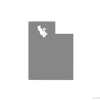NEC 2020 Code Changes Update

Approved by the Maine Electrician's Examining Board for Maine Electricians License Renewal.
Yes! We Are Approved by the Maine Electrician's Examining Board for Maine Electricians' License Renewal.
Maine Electrical Board Continuing Education Provider License#: 140NEC 2020 Code Changes Update Course Topics:
Other ME
Electricians
took these electrical continuing education courses with us: | ||
| Click on a banner below to go to the page for that course | ||
| NEC 2020 Code Changes Update | Course #: 53
Credit Type: Code Update
|
Credit Hours: 15.0
Price: $119
|
| NEC 2023 Code Changes Update | Course #: 92
Credit Type: Code Update
|
Credit Hours: 15.0
Price: $159
|





